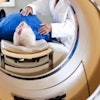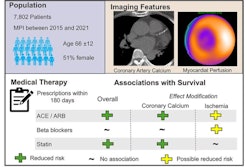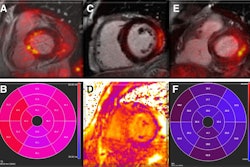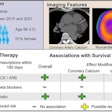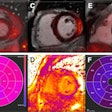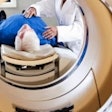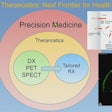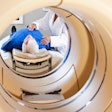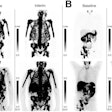Dear AuntMinnie Member,
SPECT/CT myocardial perfusion imaging is a highly accurate method for diagnosing coronary artery disease, based on its ability to detect areas of the heart with ischemia and coronary artery calcium. Now, researchers suggest the modality may be used to identify patients who are more likely to benefit from specific therapies. Click here for more details.
In other SPECT/CT news, we reported that the modality is also valuable for diagnosing transthyretin amyloidosis, with researchers finding that a measurement called the “myocardium-to-blood ratio” was 100% accurate in patients with suspected disease.
Other modalities in nuclear medicine -- PET, PET/CT, and PET/MRI -- also continue to push research to new heights, as seen in these recent stories we’ve posted:
- In a study in Radiology, researchers reported that F-18 fluoroestradiol PET may improve staging of grade 1 or 2 estrogen receptor-positive breast cancer compared with F-18 FDG-PET.
- A PET study by a group from Massachusetts General Hospital in Boston found that women over the age of 70 who took menopausal hormone therapy more than a decade before have faster brain tau accumulation -- a key indicator of Alzheimer’s disease.
- PET/MRI and dual-energy CT have revealed heart and lung abnormalities in patients with long COVID, reported a group at the Icahn School of Medicine at Mount Sinai in New York City.
- A PET/CT study presented at the recent American College of Cardiology annual meeting suggests that a coronary artery calcium score of 0 is an accurate indicator of low coronary heart event risk -- even as a person ages.
The development of new PET radiotracers also continues to be a vibrant area of research, with a study in Scientific Reports recently suggesting that a new gallium-68-labeled PET/CT radiotracer appears superior to F-18 FDG for detecting bone metastases. In another study, also by researchers in China, a new PET radiotracer showed promise for diagnosing triple-negative breast cancer.
We also delved into radionuclide development issues. We published a story on how efforts to dispose of spent nuclear waste left over from the Cold War have turned into a boon for supplies of actinium-225. We also discussed with researchers how a select group of eight radionuclides holds hope for emerging targeted alpha therapy.
Finally, we also covered controversy around the reintroduction of the Nuclear Medicine Clarification Act of 2025, with radiology societies and the bill's proponents at odds over the legislation.
For more molecular imaging news, be sure to check in regularly with our Molecular Imaging content area. And as always, if you have molecular imaging topics you'd like us to consider, please contact me.
Will Morton
Editor
AuntMinnie.com




